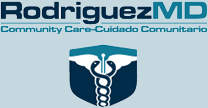Recognizing Signs of a Stroke
Stroke is a disease of the blood vessels of the brain. An ischemic stroke occurs when a blood vessel becomes blocked by a clot. If a blood vessel ruptures and bleeds, that is a hemorrhagic stroke. When the brain can no longer get the blood and oxygen it needs, brain cells die. Subsequently, the parts of the body that are controlled by the affected brain cells do not function properly. Stroke is a leading cause of disability and death.
 There are several immediate signs that indicate someone may have suffered a stroke. One side of the face that droops or goes numb may indicate a stroke. Ask the person to smile and see if their smile looks even. Another indication of a stroke may be weakness or inability to move one side of the body. Ask the person to raise both arms up. Look for one arm that is noticeably weaker.
There are several immediate signs that indicate someone may have suffered a stroke. One side of the face that droops or goes numb may indicate a stroke. Ask the person to smile and see if their smile looks even. Another indication of a stroke may be weakness or inability to move one side of the body. Ask the person to raise both arms up. Look for one arm that is noticeably weaker.
A person who has had a stroke may have sudden difficulty walking. They may experience dizziness, loss of coordination, or issues with balance. A stroke victim may have difficulty speaking. There may be slurring of words, garbled speech that is hard to understand, confusion when trying to speak, or an inability to form words.
A stroke may begin with a sudden severe headache or sudden vision problems in one or both eyes. The person may seem unusually confused or unresponsive.
A key point to remember if you believe someone has had a stroke is the word FAST. Check the Face (ask them to smile), Arms (ask them to raise both arms), Speech (slurred, garbled, confused). The final thing is Time to act quickly. Stroke is a life-threatening emergency, and time is critically important. Call 911 and have the individual transported to the hospital immediately. Rapid emergency treatment can save lives and minimize the risk of long term disability.




